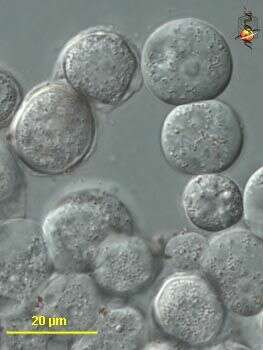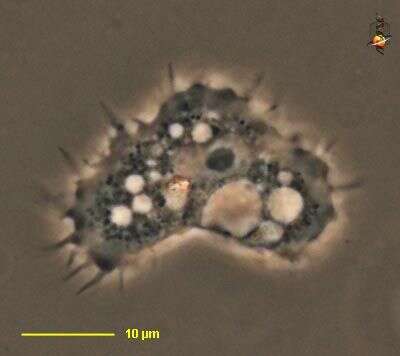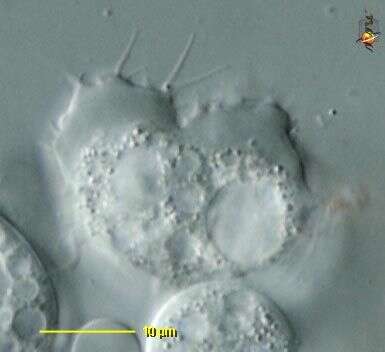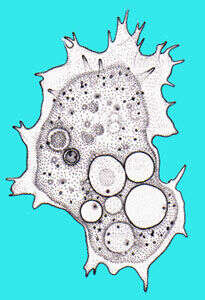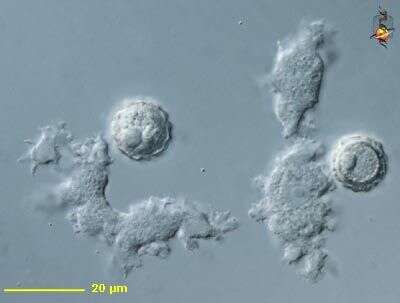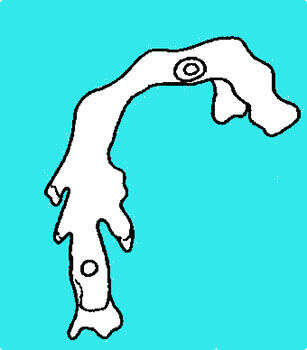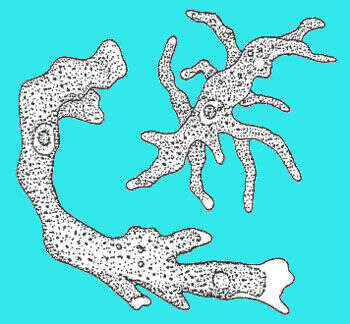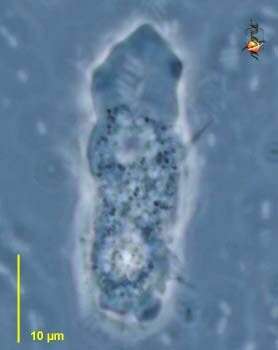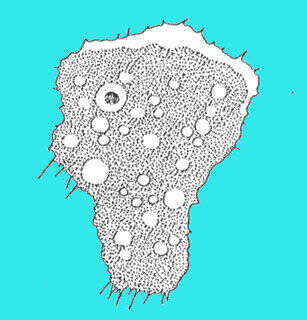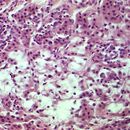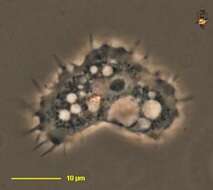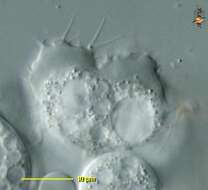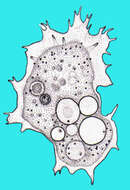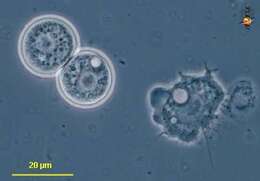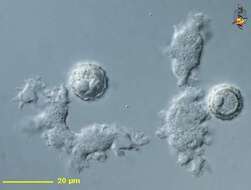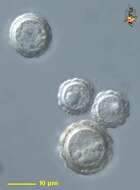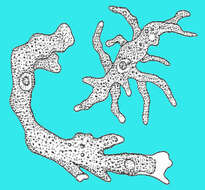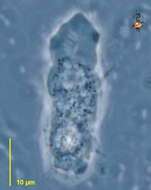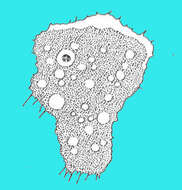-
Acanthamoeba (a-can-tha-me-ba), collection of cysts. Irregular shape of cyst wall and with pores is characteristics of this and closely related genera. Differential interference contrast.
-
Acanthamoeba (a-can-tha-me-ba), fine extensions are referred to as subpseudopodia, because they emerge from the hyaline cap. Anterior is to north. Nucleus with dark nucleolus is in the centre of the cell. Large vacuole near base of cell is the contractile vacuole. Phase contrast.
-
Acanthamoeba (a-can-tha-me-ba), detail of hyaline cap with subpseudopodia. Nucleus also evident. Differential interference contrast.
-
-
Protacanthamoeba (prote-a-can-tha-me-ba), free-living lobose amoeba with extensive hyaline zone and fine subpseudopodia arising from the margins of the cell. Trophic cells and cysts, contractile vacuole and nuclei visible in both. Phase contrast.
-
Balamuthia (bah-lah-moo-thee-a) is an amoeba which was first isolated as an infectious agent of primate (not human) brains. Irregular appearance. Differential interference contrast.
-
Balamuthia (bah-lah-moo-thee-a) is an amoeba which was first isolated as an infectious agent of primate (not human) brains. Irregular appearance. This image shows various cysts. Differential interference contrast.
-
-
-
Comandonia (come-and-own-ee-a) - one of the acanthamoebid amoebae, with a hyaline region from which some fine subpseudopodia may emerge. This cell has a well developed hyaline region and the contractile vacuole is also evident. Distinguished by leaving the cyst through an operculum. Phase contrast.
-

